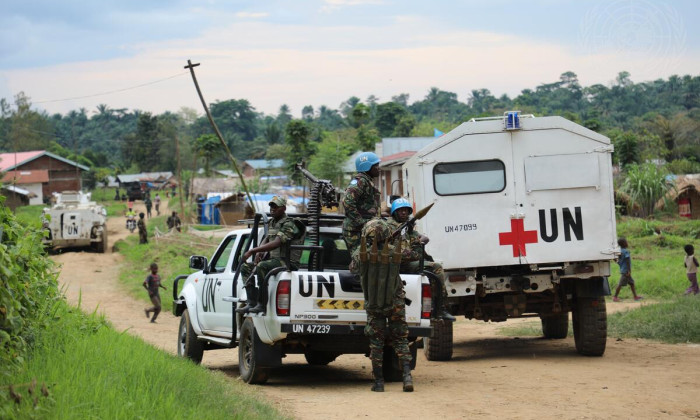Protection of Civilians (PoC)
For the UN, protection of civilians has become one of the core tasks of peacekeeping missions since the mission in Sierra Leone (UNAMSIL) in 1999, the first one with an explicit PoC mandate. In 2023, six of 12 blue helmet missions include an explicit PoC mandate and are authorized to use force for its implementation (>Robust Interventions). Examples are the UN mission in the Democratic Republic of the Congo (MONUSCO), tasked with protecting the civilian population from attacks by rebels, and the UN Mission in South Sudan (UNMISS), which most recently (February 2023) provided physical protection for around 37,000 people in a specially established protection site within its base in Malakal..
Nowadays, most UN missions have a mission-wide PoC strategy that stipulates risk scenarios, appropriate reactions and the responsibilities of the mission components. In its policy documents, the UN defines PoC as a whole-of-mission activity in which all mission components – military, police and civilian – contribute to the implementation of the PoC in each of three tiers (UN POC Policy):
Thousands of blue helmets protect civilians every day from the effects of physical violence, e.g., in
- UNMISS (South Sudan)
- MONUSCO (Democratic Republic of the Congo)
- MINUSMA (Mali)
 © Michael Ali
© Michael Ali
Tier 1: “protection through dialogue and engagement” (i.e. support of political processes, building of institutional capacities, conflict management and reconciliation);
Tier 2: “provision of physical protection” (i.e. deterrence through military presence of troops, patrols, intervention in situations of acute danger, offensive operations); and
Tier 3: “establishment of a protective environment” (i.e. maintenance of law and order through patrols in refugee camps, police measures around these camps to protect against violence, establishment of a secure environment for the return of refugees, training of security forces, strengthening of the rule of law and the human rights regime).
In all areas, missions are to focus on prevention and pre-emption – requiring, among other things, a functioning system for information gathering and early warning. This represents a sizeable challenge in large and/or inaccessible areas of operation, such as in the Democratic Republic of the Congo, South Sudan or the Central African Republic. The often central role and broadness of PoC mandates in peace operations have led to raised expectations of protection by UN forces in countries of operation and increased the pressure to succeed.
Military missions of the EU can also be assigned PoC tasks. EUFOR Artemis, the first EU military mission, was deployed to the Democratic Republic of the Congo in 2003 to stabilize the security situation and prevent a humanitarian catastrophe. In addition, the UN Special Political Missions, the EU civilian missions and the OSCE presences contribute to the protection of civilians, e.g. in the areas of >Rule of Law or >Human Rights.
As of 02.08.2023